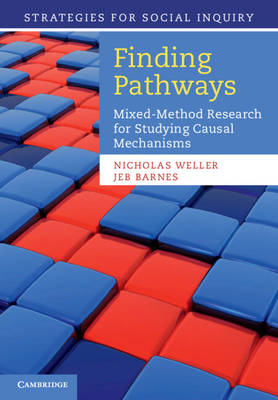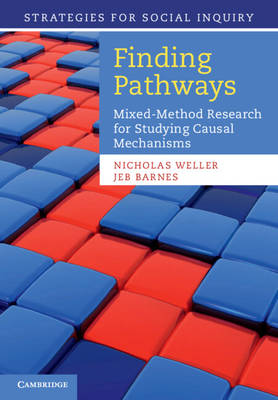
Door een staking bij bpost kan je online bestelling op dit moment iets langer onderweg zijn dan voorzien. Dringend iets nodig? Onze winkels ontvangen jou met open armen!
- Afhalen na 1 uur in een winkel met voorraad
- Gratis thuislevering in België vanaf € 30
- Ruim aanbod met 7 miljoen producten
Door een staking bij bpost kan je online bestelling op dit moment iets langer onderweg zijn dan voorzien. Dringend iets nodig? Onze winkels ontvangen jou met open armen!
- Afhalen na 1 uur in een winkel met voorraad
- Gratis thuislevering in België vanaf € 30
- Ruim aanbod met 7 miljoen producten
Zoeken
€ 59,45
+ 118 punten
Uitvoering
Omschrijving
Social scientists have identified a need to move beyond the analysis of correlation among variables to the study of causal mechanisms that link them. Nicholas Weller and Jeb Barnes propose that a solution lies in 'pathway analysis', the use of case studies to explore the causal links between related variables. This book focuses on how the small-N component of multi-method research can meaningfully contribute and add value to the study of causal mechanisms. The authors present both an extended rationale for the unique role that case studies can play in causal mechanism research, and a detailed view of the types of knowledge that case studies should try to generate and how to leverage existing large-N data to guide the case selection process. The authors explain how to use their approach both to select cases and to provide context on previously studied cases.
Specificaties
Betrokkenen
- Auteur(s):
- Uitgeverij:
Inhoud
- Aantal bladzijden:
- 171
- Taal:
- Engels
- Reeks:
Eigenschappen
- Productcode (EAN):
- 9781107684768
- Verschijningsdatum:
- 29/08/2014
- Uitvoering:
- Paperback
- Formaat:
- Trade paperback (VS)
- Afmetingen:
- 170 mm x 244 mm
- Gewicht:
- 317 g

Alleen bij Standaard Boekhandel
+ 118 punten op je klantenkaart van Standaard Boekhandel
Beoordelingen
We publiceren alleen reviews die voldoen aan de voorwaarden voor reviews. Bekijk onze voorwaarden voor reviews.











